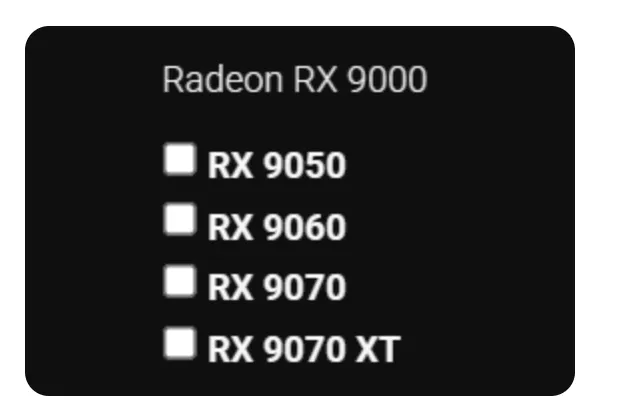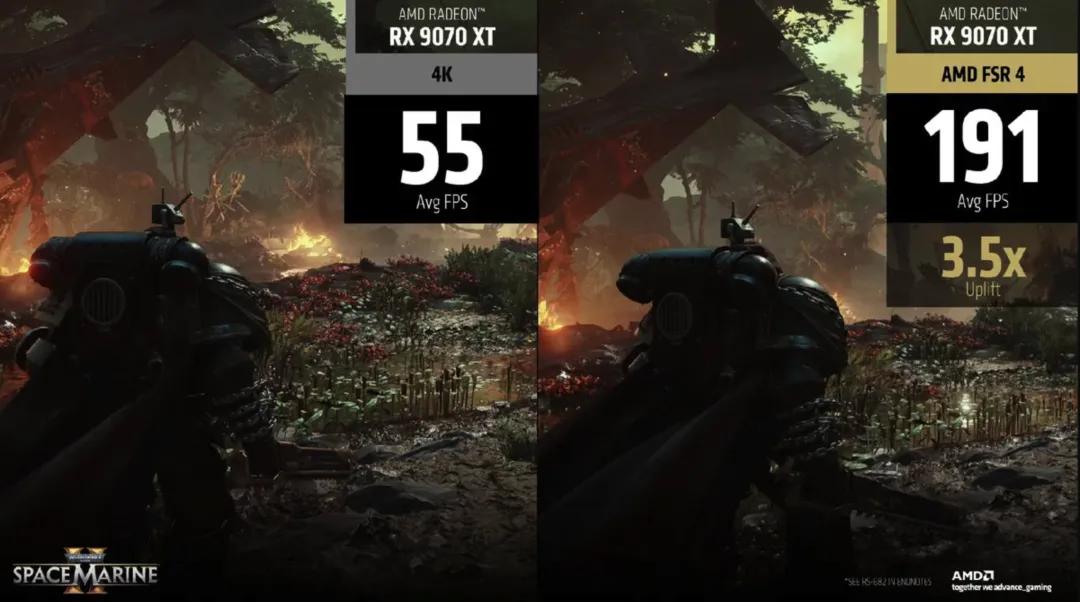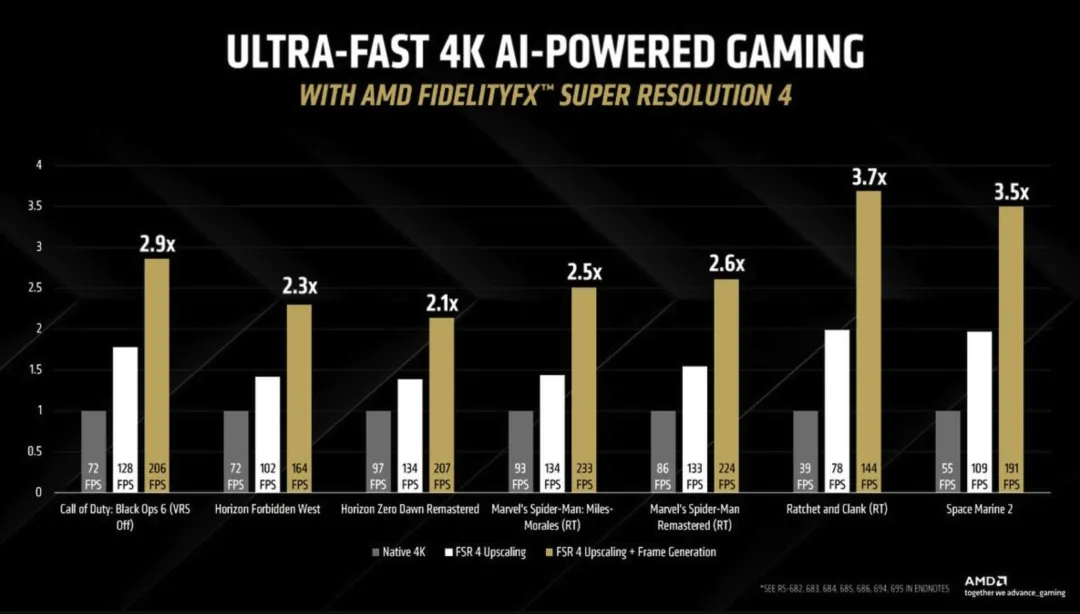AMD appears to be gearing up for new developments in its Radeon RX 9000 series under the RDNA 4 architecture. In addition to the much-anticipated RX 9060, the company may also introduce a lower-tier RX 9050. These two graphics cards are expected to fill a gap in the entry-level market, offering more options for budget-conscious gamers. Recently, a clue surfaced when the Mexican retailer DDTECH’s website inadvertently leaked this information, with the Radeon RX 9050 and RX 9060 appearing in its product filter list. Although AMD has yet to officially confirm the existence of the RX 9050, this hint has already sparked heated discussions among hardware enthusiasts.
Over the past few years, AMD’s GPU strategy has primarily focused on the mid-to-high-end market. From the RX 5000 to the RX 7000 series, entry-level “50-tier” cards have been rare in its lineup. While the RX 5500 XT and RX 6500 XT attempted to break into the sub-$200 segment, their limited performance and design flaws—such as the RX 6500 XT’s mere 4GB VRAM and PCIe x4 interface—resulted in lackluster competition against NVIDIA. In contrast, NVIDIA launched the RTX 3050 under its Ampere architecture but skipped the RTX 4050 in its Ada Lovelace lineup. Today, with hardware performance becoming increasingly abundant, demand is growing for affordable, reliable entry-level GPUs (in other words, entry-level cards are now perfectly adequate for mid-to-low-end scenarios).

The potential debut of the RX 9050 is generating excitement. As part of the RDNA 4 family, it may target a price range below $250 or even $200. Based on current trends, this card is estimated to feature at least 8GB of GDDR6 memory to meet the minimum requirements of mainstream games in 2025. Meanwhile, its power consumption is likely to stay below 150W, continuing the energy efficiency advantage typical of the RDNA architecture. Compared to the shortcomings of the RX 6500 XT, AMD seems to have learned its lesson, and the new card is expected to offer improvements in bandwidth and performance—possibly through a wider memory bus or more efficient compute units.
As for the RX 9060, the news is more concrete. AMD has confirmed that this series will launch in the second quarter of 2025 (April to June), targeting the mid-range market and directly competing with NVIDIA’s upcoming RTX 5060 and RTX 5060 Ti. Reports suggest the RX 9060 could be based on the Navi 44 chip, offering 8GB or 12GB memory options with a 128-bit or 192-bit memory bus. Power consumption is expected to range between 150W and 200W, making it suitable for small form factor PCs and users with lower-wattage power supplies. Additionally, the third-generation ray tracing accelerators and second-generation AI accelerators in the RDNA 4 architecture will enhance ray tracing performance and AI computing capabilities.
The highlights of RDNA 4 extend beyond hardware specs. AMD, in collaboration with Sony, has developed FidelityFX Super Resolution 4 (FSR 4), which will be an exclusive feature of the RX 9000 series. This AI-driven super-resolution technology stems from their joint “Project Amethyst” initiative. According to PS5 architect Mark Cerny, the project entered a rapid development phase by late 2023, aiming to create a high-performance AI architecture compatible across PCs, consoles, and the cloud. Cerny noted that Sony and AMD seek to address the differing gaming needs of console TVs and PC monitors through a unified network architecture and training strategy. This partnership was officially announced by Sony in late 2024.

FSR 4 marks a significant leap over FSR 3, with image quality and frame rate optimization now closely rivaling NVIDIA’s DLSS 4. Although DLSS 4, powered by Transformer models, remains the benchmark for super-resolution tech, FSR 4’s advancements are undeniable. However, like DLSS 4’s exclusivity to the RTX series, FSR 4 will be limited to RX 9000-series GPUs. This means older Radeon users won’t directly benefit, but new card owners can seamlessly upgrade to FSR 4 in games supporting FSR 3.1 (such as Call of Duty: Black Ops 6), enjoying more efficient performance boosts.

Beyond hardware upgrades, AMD is also strengthening its software ecosystem. Rumors suggest the RX 9000 series may support ROCm (Radeon Open Compute) on Windows. This open-source computing framework was previously geared toward data centers and professional applications. If true, this would provide developers with more tools, expanding Radeon GPUs’ use in AI and machine learning tasks. AMD executives are optimistic, believing this will further broaden RDNA 4’s market potential.
For budget gamers, the arrival of the RX 9050 and RX 9060 is undoubtedly good news. The former is expected to deliver reliable 1080p gaming performance at a price below $200, while the latter could compete with the RTX 4060 at 1440p resolution. Both cards are likely to be manufactured using TSMC’s 4nm process, an improvement over RDNA 3’s 5nm node, offering better efficiency and density. This not only reduces heat output but also provides more headroom for overclocking.
However, the RX 9050’s exact specifications remain a mystery. Some industry insiders speculate it could be a further stripped-down version of the Navi 44 chip, with fewer compute units and a narrower memory bus to cut costs. Regardless, AMD clearly intends to reshape its standing in the entry-level market with RDNA 4. As Q2 2025 approaches, more details about these cards will gradually emerge. Whether it’s the RX 9050’s low-price allure or the RX 9060’s mid-range prowess, AMD could bring surprises to budget gamers. Stay tuned—this entry-level GPU showdown is just getting started.
